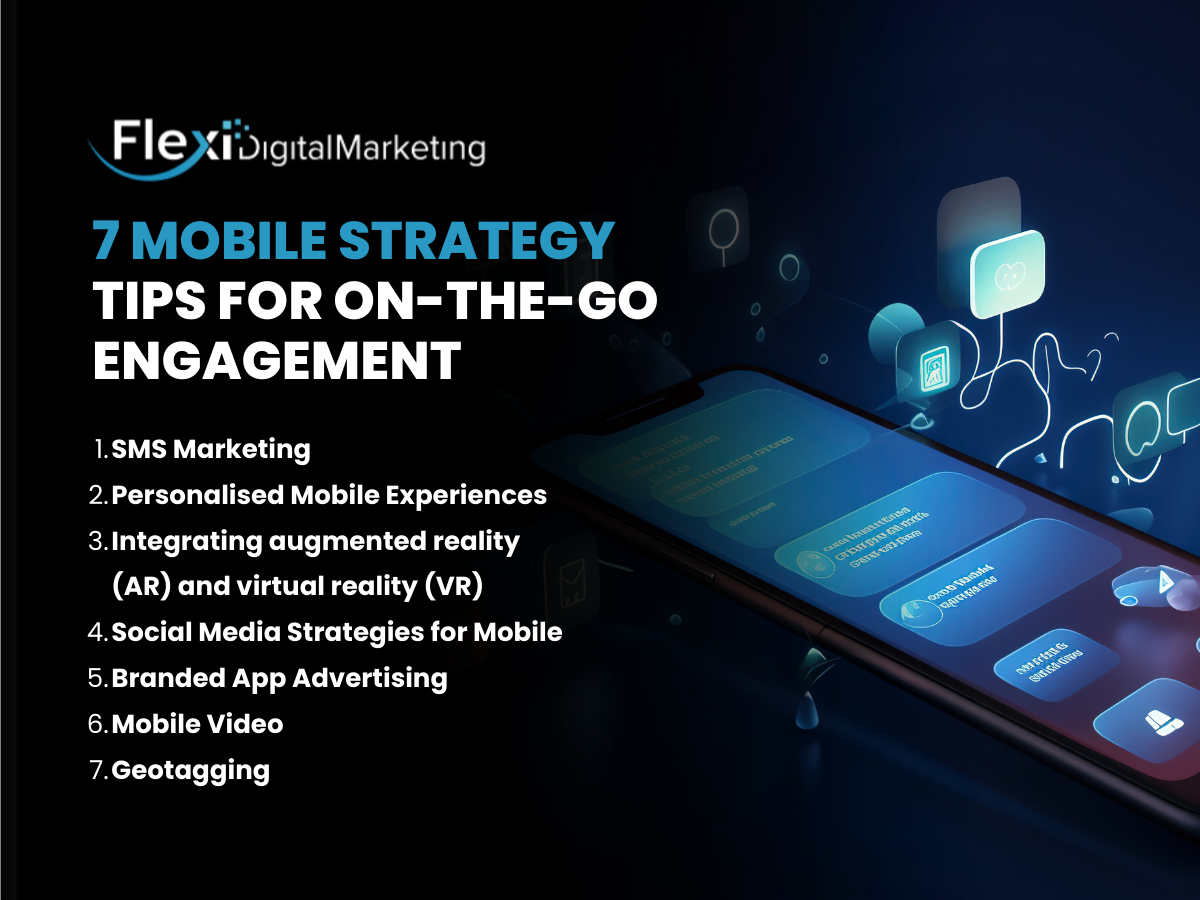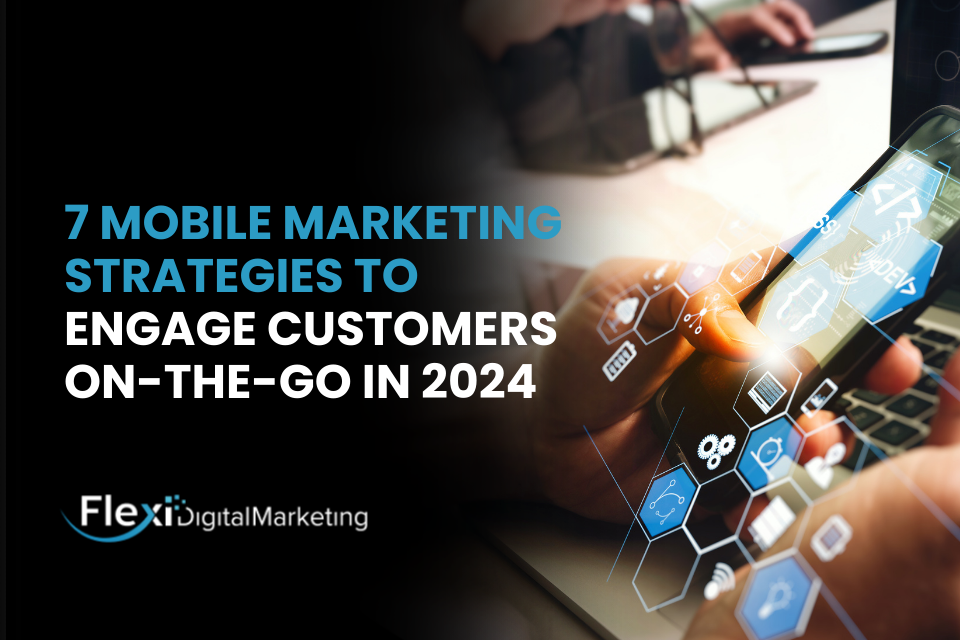Mobile marketing strategies are consistently changing as a side effect of the global technological advancement of the world. But how does a business owner take advantage of it and how do they gain more engagement through the use of mobile marketing strategies?
What are Mobile Marketing Strategies
The 2024 marketing standards no longer compare to the marketing styles of the early 2000s. This is because of mobile marketing strategies. People have now grown accustomed to the usage of smartphones and tablets daily. As a result, there is a continuous growing activity within mobile technology.
Mobile marketing strategies use location or algorithm-based interests to campaign advertisements for target market users.
Overview of the Evolving Mobile Landscape and User Behavior
Mobile marketing strategies directly relate to how the mobile phone industry has evolved. In their earlier years, promotions were sent using text messages. Nowadays, you can expect market ads through apps, games, or websites on a mobile device. You can even go so far as to scan QR codes and be directly linked to an advertisement for a service.
How is this done? Back then, mobiles only needed to text. However, the evolution of technology has allowed users to be pinpointed through their locations and divide them by demographic group. What is helpful as well is checking in on the particular behaviors observed when using a mobile phone.
Digital marketing itself acknowledges that mobiles are an effective and necessary way to advertise products or services. Everyone owns a mobile phone these days with mobile users increasing each year.
7 Mobile Strategy Tips for On-the-go Engagement
Mobile marketing trends have adapted and evolved since the birth of telecommunication. Engagement has now become a top priority for digital marketing. While there are many examples of mobile marketing strategies, here are seven that could change your engagement rankings.

SMS Marketing
Mobile marketing strategies like SMS marketing are backed up by years of their effectiveness. Recently, mobile advertising via text messages has added a new twist to boost engagement: promos and coupons.
SMS marketing texts users with their consent and sends them coupons, promos, or deals that cater to a business or app that the client uses. Notifications make it easy for mobile users to notice when they receive a text, and by adding that it’s from a trusted brand source, they will likely click or read through the message itself.
Take note that it is important to have links included when marketing via SMS. This makes the engagement longer and gives out more information to the receiver.
Personalized Mobile Experiences
A key problem with mobile marketing strategies is mobile optimization. Your advertisement could be visually disrupted if not considered, halting the advertisement or even giving your brand a bad reputation in terms of quality.
Take note that screens must be optimized to fit both smartphones and tablets for the customer’s comfort. Graphic designs and other visuals at their full potential could bring in more clients if seen in the best light.
Integrating augmented reality (AR) and virtual reality (VR)
Personalizing an immersive campaign is a large project that collaborates a business with a team of skilled professionals. It is a marketing strategy that goes beyond simple messages and inquiries.
Augmented and virtual reality transports the users into a game-like version of a world built within software. Some businesses take this type of technology to create their universe-like locations made up of data.
Not only does it increase engagement, but it also leaves a lasting impression on the users who participate in your mobile marketing strategy.
Social Media Strategies for Mobile
A big factor in mobile marketing strategies is the existence of social media. Apps such as Facebook, Instagram, and TikTok are used mostly by mobile users when lounging on their devices.
Take advantage of this by encouraging followers to engage in your business account. Customer interaction is necessary to hold a memorable identity with potential customers. An example would be branding responses with humor, using popular hashtags, holding digital events, and responding to inquiries.
Another way of using social media to your advantage is to use it for paid advertising and promotion. From influencers to user algorithms, paying for your brand to be advertised to your demographic will help tremendously if performed correctly.
Branded App Advertising
Large multinational companies usually combine software with their brand by creating their own app downloadable from Google Play or the Apple store. Examples of this would be McDonald’s or Domino’s. This type of app allows easy proximity search to their nearest branch or even used as a delivery service in terms of fast food.
On the other hand, there are also apps that encourage fitness and health created by Nike. It all depends on the type of business regarding the content within the app itself. Either way, branded app advertising allows easy access to regular customers and increases the business’ engagement.
Mobile Video
The rise of YouTube, TikTok, and Snapchat has made it easier for mobile users to watch things with no interruption on their mobile phones. As a result, advertisements that are short and engaging are viewed as paid advertisements when using an app.
Paid advertisements, if the story is unique and creative, could go viral themselves. However, shooting a mobile video for marketing is entirely different from an actual commercial. Some mobile marketing videos that have gone trending are silly, random, or even simply showing an interaction between an employee and their boss.
It all depends on the nature of the product or service a business is selling. If the product is targeted at millennials and younger, humor may be the best tone for the video. However, if it targets professionals in finance, law, or more, it may be more suited to use a formal tone.
Geotagging
Using data taken from the GPS functions of a mobile phone makes it easier for relevant advertisements to show up on a potential client’s phone. Geotagging is one of the fairly new ways for mobile marketing strategies to reach not just a growth in engagement, but those who can reach the location of a business.
A perfect example of a business that can grow with geotagging is restaurants. Mobile users looking for a new place to dine in their local area are the type of demographic that a restaurant owner targets.
By using geotagging, the restaurant owner will simply have ads or their services appear as advertisements for the company.
Future Digital Marketing Trends for Mobile Advertising
The digital marketing trends change every year. This makes mobile marketing strategies flexible and unpredictable at the same time. It is best to keep up with technological advances as digital marketing becomes more necessary.
Some trends remain consistently used. Meanwhile, other trends emerge after the release of a creative advertisement from other companies. To get ahead of the crowd, the business owner must prioritize foreseeing future digital marketing trends.
The key to acquiring a solid and adaptable background in the future trends of digital marketing is through experience. Outside of business hours, you are also a potential client on your mobile phone. You can learn from pure observation or even look up the success rate of each mobile marketing strategy. Either way, mobile marketing strategies must be implemented for your business’ engagement and brand reputation.
Elevate your mobile marketing game in 2024! Dive into our guide for actionable strategies and stay ahead of the curve. Ready to transform your mobile campaigns? Contact Flexi Digital Marketing!


